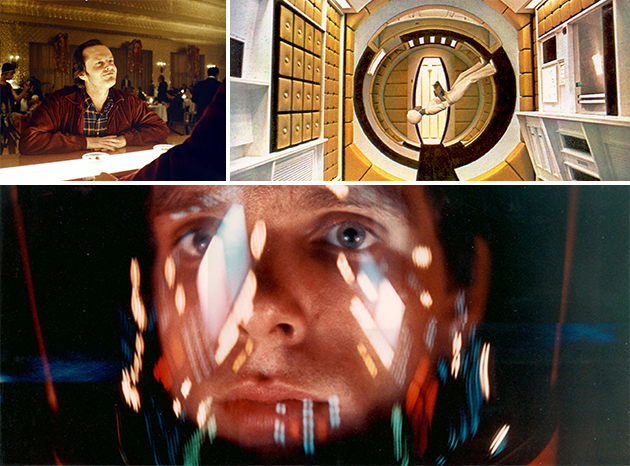
His name evokes images of a psychotic Jack Nicholson, limping through a snowy maze, wielding an axe; a mischievous Malcolm McDowell, violently writhing to Beethoven’s Ninth symphony; and a dying, passive aggressive computer named HAL, singing “Daisy Bell (Bicycle Built for Two)” as his last megabyte is disconnected. Stanley Kubrick is one of film’s true giants, and at “Stanley Kubrick,” which premiered in the U.S. at the Los Angeles County Museum of Art (now through June 30), you can immerse yourself in all things Kubrickian in a masterful and moving exhibition presented by LACMA in conjunction with the Academy of Motion Pictures Arts and Sciences. Peruse archival footage, annotated scripts, photography, authentic costumes, custom-made lenses and camera rigs, set models, original promotional materials and various set props at this comprehensive showing.
The exhibition opens in a darkened lobby with highlights from Kubrick’s canon projected on a wall. If you had forgotten the eerie POV of Danny’s Big Wheel spin through the haunted hallways of the Overlook Hotel or Lolita’s undeniably sultry and seductive close-up glances, these vignettes will reel you immediately back in.
Beginning from when he was 16 during his time photographing celebrities and taking documentary style pictures for Look Magazine, the exhibit chronicles the impressive trajectory of Kubrick’s career room-by-room, film by film, artifact by artifact: Kirk Douglas’ armor from Spartacus; hand-written notes over script pages bearing the lines, crossed out then hand-written, “All work and no play make Jack a dull boy;” the ape costume, ominous black monolith and floating fetus model from 2001: A Space Odyssey; costumed mannequins from the Korova Milk Bar in A Clockwork Orange; the dresses and shoes the twins wore in The Shining; a miniature model of the War Room from Dr. Strangelove; and a diorama of striking masks from Eyes Wide Shut.
Kubrick’s meticulous preparation and implacable imagination are illuminated in overwhelming detail. In addition to possessing a level of discipline and vision few of his peers possessed, he was also innovating cinematic technology still used in the movie industry today. Remember the use of techniques such as filming by candlelight in Barry Lyndon (1975)? Or the ability to have camera mounts that swiveled 360 degrees complemented by front projection effects in 2001: A Space Odyssey? Kubrick mastered it all.
Before its premiere in the U.S., the exhibition was launched at Deutsches Filmmuseum in Frankfurt and has traveled to Berlin, Melbourne, Ghent, Zurich, Rome, Paris, and Amsterdam.
Photos Courtesy of Warner Bros Entertainment Inc

